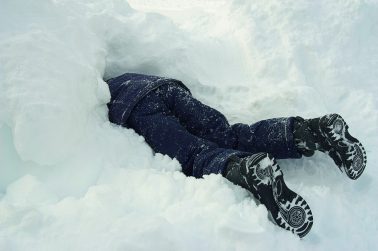Winter-proofing your workplace
 Winter can be a challenging time for employers. Illnesses such as colds and flu are more common, leading to higher levels of staff absenteeism. Adverse weather may mean that your employees are unable to get to work, or that your stock and customers may be unable to reach you. You will also have to consider the hazards winter may bring to your workplace. In 2014-15, the Hospital Episode Statistics for England reported 2,919 hospital admissions due to falls on snow and ice. Every year workplaces face consequences including:
Winter can be a challenging time for employers. Illnesses such as colds and flu are more common, leading to higher levels of staff absenteeism. Adverse weather may mean that your employees are unable to get to work, or that your stock and customers may be unable to reach you. You will also have to consider the hazards winter may bring to your workplace. In 2014-15, the Hospital Episode Statistics for England reported 2,919 hospital admissions due to falls on snow and ice. Every year workplaces face consequences including:
- Lost or reduced productivity
- Increased demands and overtime on those employees who can get into work
- Legal consequences of preventable accidents
Winter-proofing your workplace can help make sure that your workplace does not add to these statistics.
The dangers of snow and ice
Slips and trips because of snow and ice are a common winter injury, but it is one which can be avoided. As an employer your duty is to prevent accidents from occurring. The key thing to remember is to stock up on the equipment for ice, snow and flood control in advance. When adverse weather threatens, supplies of these often run short. The equipment that you may need ranges from shovels and snow ploughs to salt and de-icers. Don’t forget to also provide warm protective clothing for the staff who will be working outdoors, including those who are making your site safe. In winter, it is more likely that employees may be arriving or leaving in the dark or gloomy conditions, so be sure that you have adequate lighting. Areas to particularly check are:
- Paths
- Car parks
- Steps
- Entrances
Even with no snow, these areas can become damaged in colder conditions with cracks and pot holes forming. Wet leaves can also be slippery, so ensure these are cleared away. Melting snow brings its own hazards, particularly if it refreezes as black ice. Melting snow will also lead to an increase of water which creates an additional slip hazard. Check your drainage system to make sure that excess water can easily drain away.
Snow and wet winter conditions can also make the interior of a workplace riskier as the water is tracked indoors. Provide absorbent matting and mops to deal with this, and place clear signs to warn your employees of the wet floor.
If you are unsure which areas in your workplace are the most hazardous, look at accident records for previous years. These will show you which areas you need to prioritise.
 Vehicles
Vehicles
If an employee’s duties include driving or your business depends on supplies arriving, you will need to take a careful look at vehicle safety. Keep a close eye on weather warnings and ensure your employees on the road do the same. If weather conditions look likely to be bad, consider if the trip is really necessary and be aware that there will be times that a trip may have to be postponed, no matter how essential. When planning a journey, look out for particular hazards such as:
- Rural roads
- Steep hills
- Accident blackspots
- Areas exposed to wind
You will need to allow extra time for the journey and also consider what additional equipment your drivers may need, such as snow shovels, ice scrapers, de-icers and warning triangles.
Working outdoors
From construction sites to road maintenance, there are many occupations which require an employee to work outdoors and as an employer it is your responsibility to keep them safe and able to work comfortably. Provide protective clothing such as gloves, hats, boots and jackets, and consider whether they may require additional breaks or reduced time outdoors. Even inside, you will need to keep an eye on the temperature and turn up the heating if needed to ensure your employees can work comfortably.
 There will be times when no matter what preparations you have made, the winter will have an impact on your business, so plan in advance how you will deal with this. If your business relies on stock arriving, how long will your stock last without deliveries? You may need to keep in communication with your customers to ensure they can be kept up to date with your stock levels.
There will be times when no matter what preparations you have made, the winter will have an impact on your business, so plan in advance how you will deal with this. If your business relies on stock arriving, how long will your stock last without deliveries? You may need to keep in communication with your customers to ensure they can be kept up to date with your stock levels.
A high level of staff absenteeism will inevitably affect your productivity. If this absenteeism is because of a winter illness which has spread, consider if there are additional staff you can call on, for example by offering overtime or using an agency. If poor weather is keeping staff at home, see if they are able to work from home instead.
Winter challenges will likely be affecting many businesses, but with careful planning you can reduce the impact on yours.
